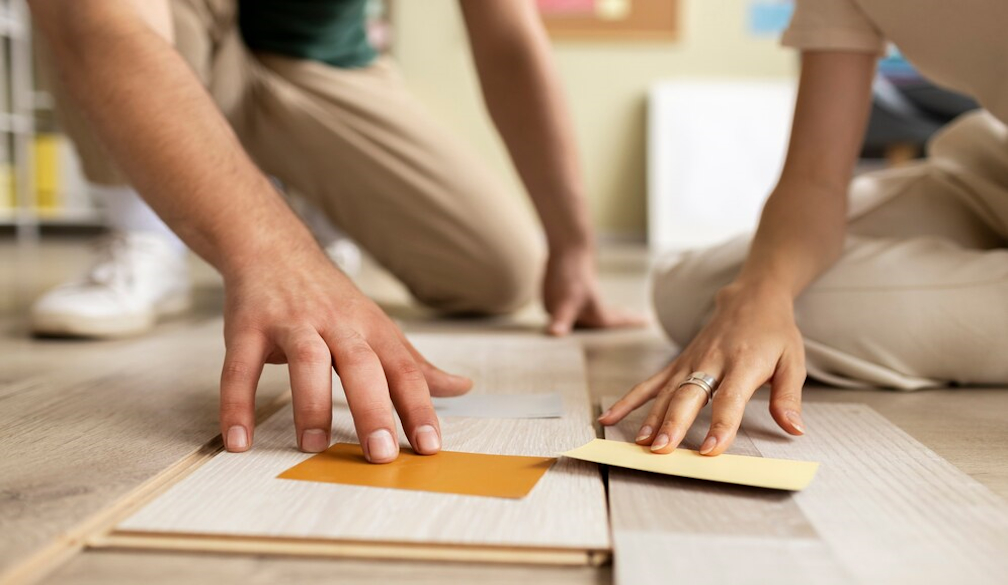Timber Flooring vs. Hardwood: Which is Better?

When selecting flooring for your home, the choice often narrows down to timber and hardwood. Both options are celebrated for their aesthetic appeal, durability, and natural charm, but determining which is better depends on your specific needs, budget, and design preferences. This guide dives into the key differences, benefits, and drawbacks of timber flooring sydney and hardwood to help you make an informed decision.
Understanding Timber Flooring
Timber flooring is a broad term encompassing a variety of wood flooring products, including engineered timber and solid timber boards. It is crafted from layers of wood or composite materials, often topped with a natural wood veneer to provide the desired aesthetic.
Types of Timber Flooring
- Engineered Timber: Composed of a solid wood top layer bonded to multiple layers of plywood or fiberboard.
- Solid Timber: Made entirely from a single piece of wood, often treated for added durability.
Understanding Hardwood Flooring
Hardwood flooring refers to flooring made exclusively from solid pieces of hardwood trees such as oak, maple, or mahogany. It is prized for its unmatched durability, rich textures, and the ability to be sanded and refinished multiple times.
Key Differences Between Timber and Hardwood Flooring
1. Durability and Longevity
- Timber Flooring: Engineered timber is less prone to warping and expanding compared to solid timber, making it suitable for areas with fluctuating temperatures or humidity. However, its lifespan may be shorter if the top veneer layer is thin.
- Hardwood Flooring: Known for its robustness, hardwood can last decades with proper care. It is ideal for high-traffic areas, although it can be susceptible to moisture damage if not sealed properly.
2. Installation Process
- Timber Flooring: Easier to install due to its engineered design. It often comes with click-lock systems for straightforward installation.
- Hardwood Flooring: Requires professional installation and can take longer because each plank must be nailed or glued into place.
3. Appearance and Aesthetic Appeal
- Timber Flooring: Offers a versatile range of finishes, textures, and colors. Engineered timber mimics the natural look of hardwood while providing modern design flexibility.
- Hardwood Flooring: Exudes timeless elegance with natural grains and a warm, authentic look that develops character over time.
4. Maintenance and Care
- Timber Flooring: Easier to maintain due to its pre-finished surface. Regular sweeping and occasional mopping with a damp cloth are sufficient.
- Hardwood Flooring: Requires more attention, including periodic sanding and refinishing, to retain its shine and protect against scratches.
5. Cost and Budget Considerations
- Timber Flooring: Typically more affordable than solid hardwood, especially engineered options. However, costs can vary depending on the quality of the top layer.
- Hardwood Flooring: Higher upfront cost due to the use of premium solid wood. The investment pays off in terms of longevity and resale value.
6. Environmental Impact
- Timber Flooring: Engineered timber uses less natural wood, making it a more eco-friendly option. Some varieties are made from sustainably sourced materials.
- Hardwood Flooring: While durable and long-lasting, its production often involves harvesting mature trees, which can have a greater environmental footprint unless sourced sustainably.
Pros and Cons of Timber Flooring
Pros
- More affordable than hardwood.
- Easier and quicker to install.
- Resistant to warping and shrinking.
- Wide variety of designs and finishes.
Cons
- Shorter lifespan compared to solid hardwood.
- Limited refinishing potential.
- May feel less authentic to traditionalists.
Pros and Cons of Hardwood Flooring
Pros
- Timeless aesthetic and rich texture.
- Extremely durable and long-lasting.
- Can be sanded and refinished multiple times.
- Adds significant value to a property.
Cons
- High upfront cost.
- Sensitive to moisture and humidity.
- Requires professional installation.
Which is Better for Your Home?
Best for Budget-Friendly Renovations
Timber flooring, particularly engineered options, is the better choice for homeowners looking for affordable yet stylish flooring. Its wide variety of finishes can complement any interior design, and it offers good value for money.
Best for Long-Term Investment
If longevity and authenticity are priorities, hardwood flooring is the superior choice. Its ability to withstand wear and tear while maintaining its charm makes it an excellent long-term investment.
Best for High-Traffic Areas
Hardwood flooring is more resilient under heavy foot traffic, making it ideal for living rooms, hallways, and other busy areas of the home.
Best for Moisture-Prone Areas
Timber flooring, especially engineered varieties, performs better in kitchens or basements due to its moisture resistance.
Conclusion
Both timber flooring sydney and hardwood flooring bring unique benefits to the table. Timber flooring is versatile, budget-friendly, and easier to maintain, while hardwood offers timeless beauty, unmatched durability, and a long-term return on investment. Ultimately, the choice comes down to your budget, aesthetic preferences, and the specific requirements of your home.
Whether you opt for timber or hardwood, both options provide a stunning and natural foundation for your living space, ensuring a warm and inviting atmosphere for years to come



